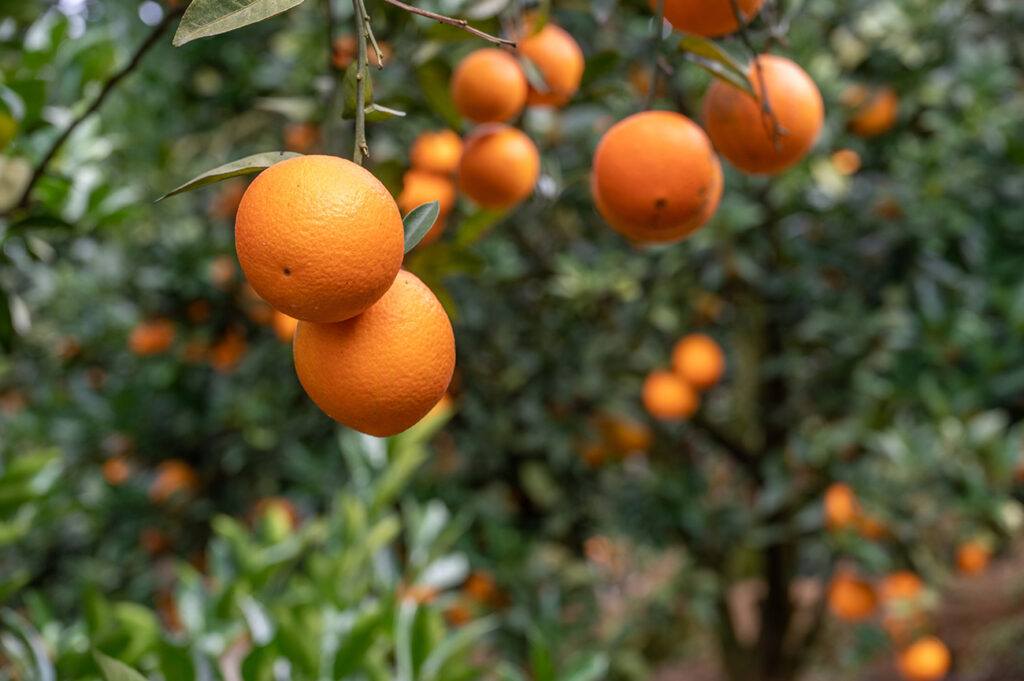6 Ways to Care for Your Fruit Trees During the Winter Months in Sonoma County
The needs of your fruit trees definitely decrease during the winter, especially their water requirements. However, there are still things you can do to support their health and get them through the winter.
In this article, you’ll learn how to look after your fruit trees during the winter months, from your small lemon tree to your home orchard of mature trees.
1. Check/Replace Mulch
Like many tree-care tasks, mulching is not once and done. If you haven’t checked on the condition and depth of the mulch around your fruit trees since the summer, winter’s the time to make sure it hasn’t broken down to the point of needing replenishing.
The depth of the mulch should be between two and four inches, or less if the soil is poorly drained. Finer or dense mulch such as pebbles, should typically only be piled one to two inches deep, to ensure enough oxygen and water is able to reach the root system.
Read about proper mulching techniques and the benefits of mulching.
2. Check for Weather Damage
With proper care and a routine trimming and pruning schedule, fruit trees should be healthy and strong enough to withstand typical winter weather conditions. However, it is always important to check on your trees after any particularly rough storms.
After heavy winds or a storm, check your fruit trees for broken and downed branches. Clearing them right away protects your property against unwanted pests. It also reduces the amount of fire fuel and creates defensible space.
3. Keep an Eye on Drainage
While we know Sonoma County is in definite need of rain, too much, too quickly, and without proper drainage could be harmful to fruit trees. Make sure to stay on top of how well your orchard is draining. Soggy trunks are not happy trunks. Make sure your trees still have adequate drainage.
4. Weed and Feed
With rains come weeds. Weeds can steal precious water and nutrients from your fruit trees, when not kept in check. Some of your trees may also need amendments or nutrients added, depending on the variety.
5. Check for and Address Pests
Not all pests have gone into hibernation. Some tree-eating pests thrive in the cold, winter months. Performing a visual inspection of your trees will catch problems before they are life-threatening to your trees.
It’s important to check the areas surrounding your fruit trees for possible pests as well. Tall grass and any other vegetation can harbor potentially harmful critters. Come springtime, any pests that may have lain dormant in the colder months will multiply and most likely migrate to your trees and other areas of your property.
Read about how to spot the signs of the most common Sonoma County tree pests.
6. Cover Planted Fruit Trees Prior to Sub-35° Temperatures
Though the North Bay, and especially Sonoma County, has moderate winters, frosty nights happen. Watch the forecast in the winter months and have coverings ready to place over your frost-sensitive fruit trees, especially the citrus varieties.
Contact a Local Certified Arborist for an Annual Tree Check-Up
If you still have questions about winter tree care or would like a professional to inspect your trees, the certified arborist at Vintage Tree Care can help.
All of our arborists are fully certified, licensed, and insured. With over twenty years of experience, our team is ready to help your trees survive and thrive through every season. Contact us online today to request your estimate!


